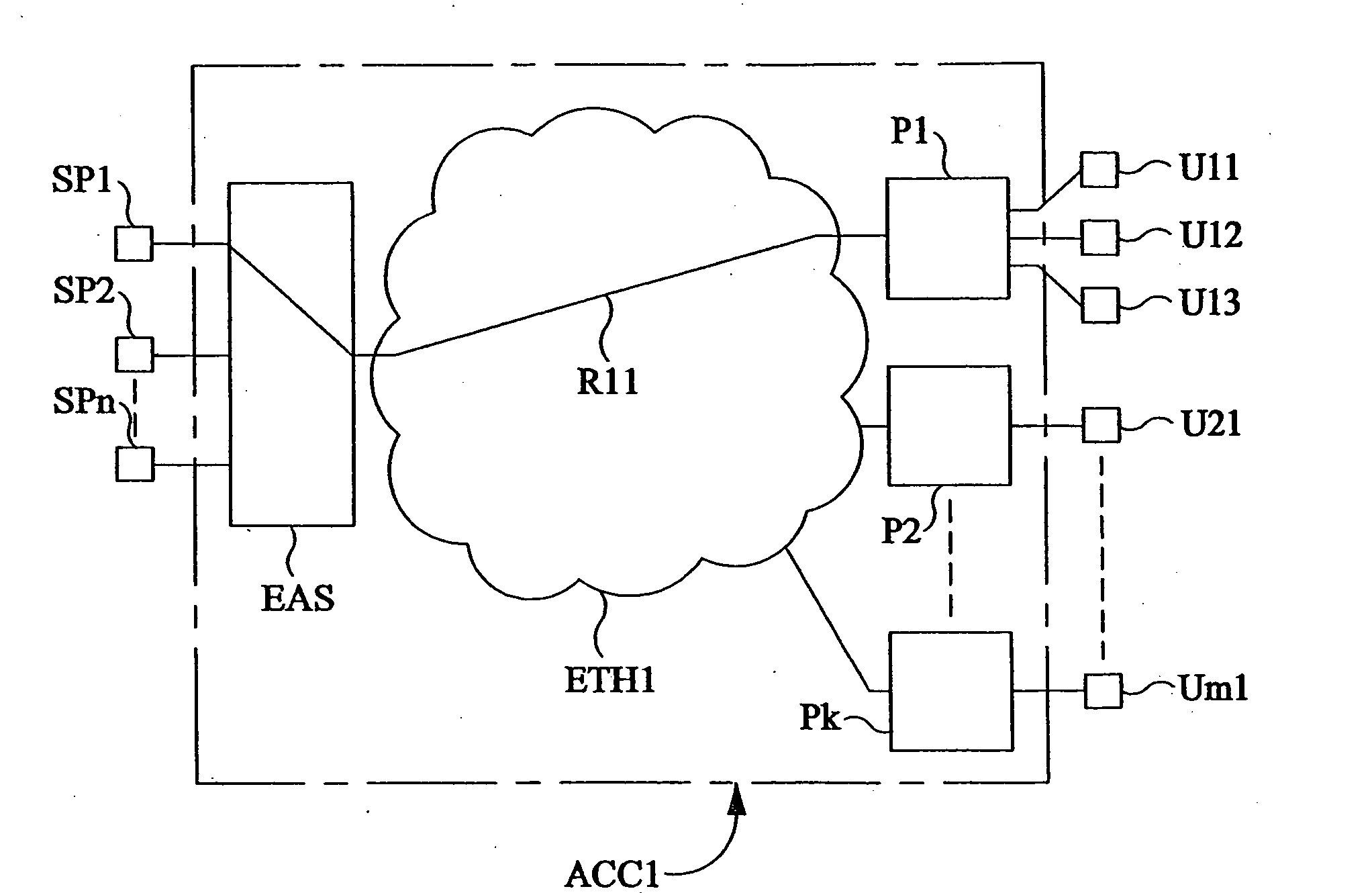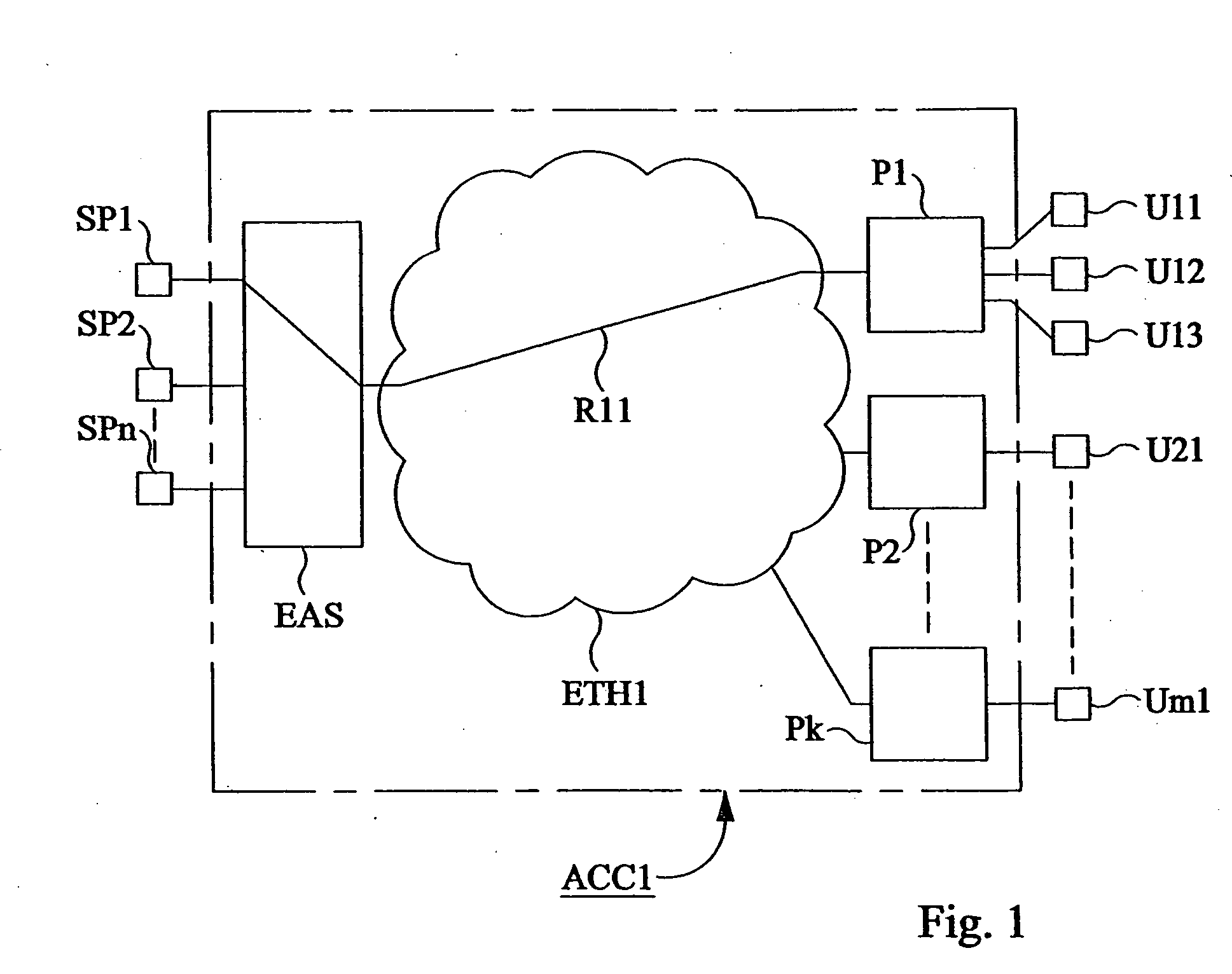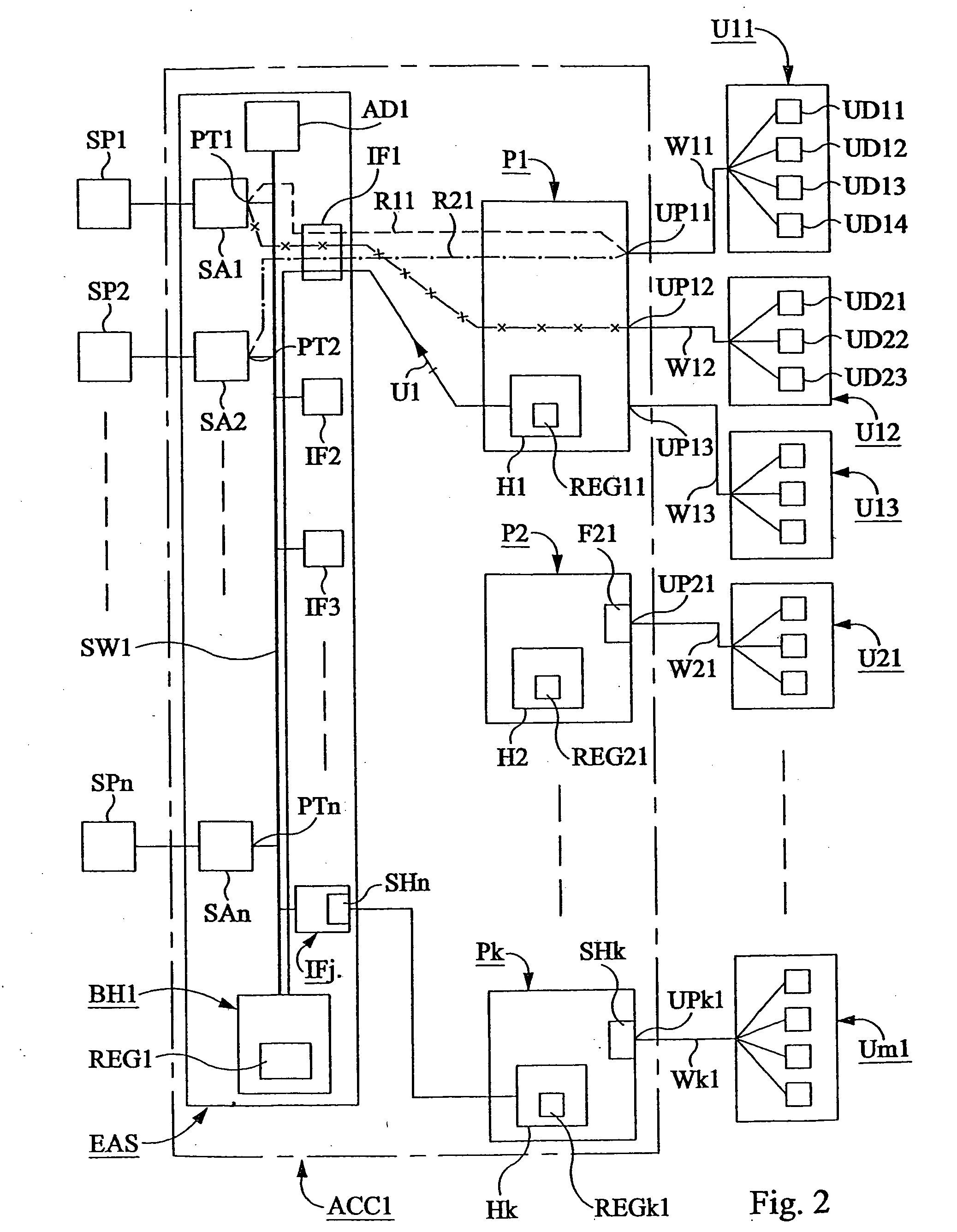Methods and arrangements in an access system
a technology of access system and access system, applied in data switching networks, frequency-division multiplexes, instruments, etc., to achieve the effect of simplifying switching, reducing internal resource usage and network bandwidth, and being efficient and comparatively simpl
- Summary
- Abstract
- Description
- Claims
- Application Information
AI Technical Summary
Benefits of technology
Problems solved by technology
Method used
Image
Examples
Embodiment Construction
[0053]FIG. 1 shows a multiservice access system ACC1 to which users U11, U12, U13, U21, . . . , Um1 and service providers SP1, SP2, . . . , SPn are connected. An objective is to build the system such that the number of the users U11 . . . Um1 can be very great, e.g. in the range of several hundred thousands users. Another objective is that the number of the service providers SP1 . . . SPn, that each user can utilize, also is a great number, e.g. in the range of thousands of services. The access system ACC1 includes nodes P1, P2 . . . Pk, to which the users are connected with the aid of Ethernet technology. The access system also includes a node EAS, to which the service providers are connected. The node EAS is connected to the user's nodes P1-Pk via a network, which is an Ethernet based network ETH1 according to the standard IEEE 802.1q. This network is a large network and has among others a number of VLAN capable Ethernet switches, not shown in the figure. The users and the service...
PUM
 Login to View More
Login to View More Abstract
Description
Claims
Application Information
 Login to View More
Login to View More - R&D
- Intellectual Property
- Life Sciences
- Materials
- Tech Scout
- Unparalleled Data Quality
- Higher Quality Content
- 60% Fewer Hallucinations
Browse by: Latest US Patents, China's latest patents, Technical Efficacy Thesaurus, Application Domain, Technology Topic, Popular Technical Reports.
© 2025 PatSnap. All rights reserved.Legal|Privacy policy|Modern Slavery Act Transparency Statement|Sitemap|About US| Contact US: help@patsnap.com



